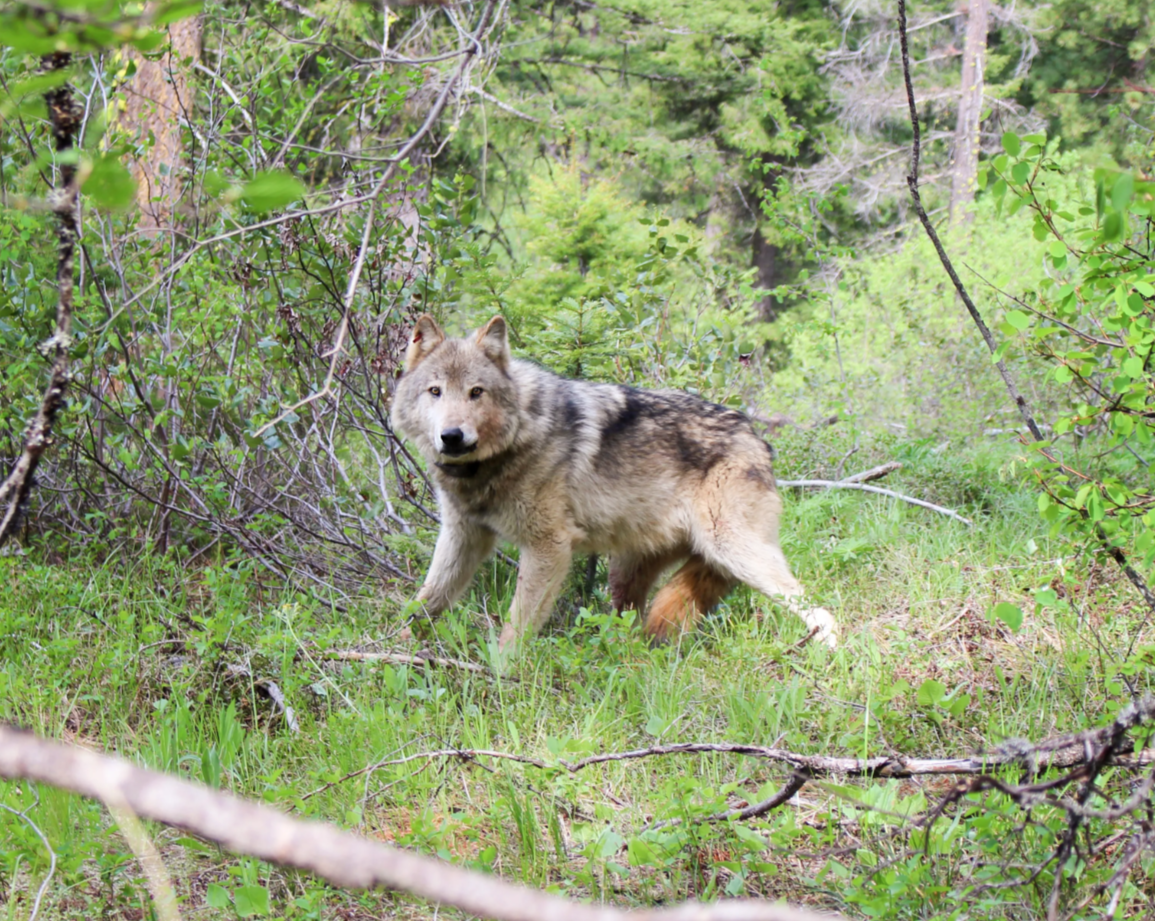The Rocky Mountain Elk Foundation agrees with recommendations from the Washington Department of Fish and Wildlife (WDFW) staff to down-list the gray wolf from a state endangered species to a state sensitive species.
“It is clear that listing the gray wolf as endangered is no longer warranted. The data supports the department’s conclusion that wolves are no longer ‘seriously threatened with extinction throughout all or a significant portion of their range,’” wrote Karie Decker, RMEF director of wildlife and habitat.
Washington had a minimum estimated wolf population of 216 wolves at the end of 2022, its 14th consecutive year of increasing wolf numbers.
“Wolves in Washington are neither declining nor are they particularly vulnerable; data collected by WDFW and the University of Washington confirms results from other countless studies, that wolves are an exceptionally resilient species that has significantly exceeded full recovery objectives in 67% of their range in Washington,” wrote Decker.
The bulk of the wolf population is in the eastern part of the state where it’s five and a half times above regional objective. They are one and a half times above objective in the North Cascades.
RMEF submitted its official comment in early August on Washington’s draft periodic status review for wolves. The WDFW Commission is tentatively scheduled to take action on a possible status change at the October 2023 meeting in Olympia, where it could decide to keep the current listing status or change to a different status.
(Photo credit: Washington Department of Fish and Wildlife)
RMEF official letter:
August 7, 2023
Commission Chair Barbara Baker
Washington Department of Fish and Wildlife
1111 Washington St. SE Olympia, WA 98501
RE: 2023 Periodic Status Review of the Gray Wolf
Chair Baker and Members of the Commission,
The mission of the Rocky Mountain Elk Foundation (RMEF) is to ensure the future of elk, other wildlife, their habitat and our hunting heritage. We represent more than 225,000 members nationwide, with nearly 13,000 residing in Washington. RMEF, with our partners, has completed 755 conservation and hunting heritage projects in Washington with a combined value in excess of $133 million. These projects have conserved and enhanced 509,242 acres of habitat and opened or improved public access to 130,661 acres.
RMEF supports the Washington Department of Fish and Wildlife (WDFW) staff recommendation to down-list the gray wolf from a State Endangered Species to a State Sensitive Species (Smith et al. 2023).
The data collected by the Department as part of its annual minimum count of wolves in Washington supports the recommendation. At the close of 2022 there were at least 216 wolves in Washington, making up 37 total packs, including 26 breeding pairs. These packs are heavily concentrated in WDFW’s Eastern and Northern Cascades Recovery Regions (WDFW et al. 2023). Combined, these two regions have exceeded the established recovery objective for the total number of breeding pairs in the state. Individually, the Eastern Region has exceeded its regional objectives by five times and the North Cascades by one-and-a-half times (Wiles et al. 2011). In 2022, WDFW documented the first resident pack in the Southern Cascades and Northwest Coast Region. Despite 37 documented mortalities in 2022, the total population, number of packs and number of breeding pairs grew for the 14th consecutive year (WDFW et al. 2022, WDFW et al. 2023).
When viewing this data against the status definitions outlined in Washington Administrative Code (WAC) 220-610-110, it is clear that listing the gray wolf as endangered is no longer warranted. The data supports the Department’s conclusion that wolves are no longer “seriously threatened with extinction throughout all or a significant portion of their range.”
Recognizing that gray wolves no longer meet the definition of endangered or threatened as established by the WAC, WDFW staff have recommended down-listing the species to a status level supported by the data. A sensitive species is defined as “any wildlife species native to the state of Washington that is vulnerable or declining and is likely to become endangered or threatened in a significant portion of its range within the state without cooperative management or removal of threats.” Wolves in Washington are neither declining nor are they particularly vulnerable; data collected by WDFW and the University of Washington confirms results from other countless studies, that wolves are an exceptionally resilient species that has significantly exceeded full recovery objectives in 67% of their range in Washington, where they are not at risk of becoming threatened or endangered, and have established a foothold in the third and final recovery region (WDFW et al. 2023, Petracca et al. 2023).
RMEF strongly supports WDFW’s recommendation to down-list wolves in Washington from endangered to sensitive and urges the Commission to follow the scientific evidence that supports this recommendation.
Thank you for the opportunity to comment.
Karie Decker
RMEF Director of Wildlife and Habitat
